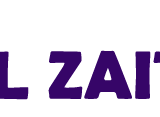In the realm of education and training, recognizing that individuals learn uniquely is paramount. As educators, trainers, and course creators, our objective is to facilitate optimal learning outcomes for all learners. Central to achieving this goal is a comprehensive understanding of learning styles. In this article, we’ll delve into the intricacies of learning styles and explore how tailoring courses to accommodate different learner preferences can enhance the learning experience for everyone.
Identifying Learning Styles
Understanding learning styles entails grasping how individuals perceive and process information. Different styles, such as visual, auditory, kinesthetic, and reading/writing, exist, with each person having a preferred modality for learning. Recognizing and catering to these diverse styles is essential for effective teaching.
The Four Main Types of Learning in Education
Educational researchers have long studied how students learn, with one prominent theory being the VARK model. According to this model, there are four primary types of learners: visual, auditory, kinesthetic, and reading/writing. While most individuals exhibit a blend of these styles, they typically excel in one. Tailoring teaching methodologies to align with each style optimizes learning outcomes.
Visual Learners
Visual learners comprehend information best through visual aids such as maps, graphs, and diagrams. They benefit from patterns and shapes, requiring visual stimuli to facilitate understanding. Employing visuals to elucidate concepts fosters effective learning experiences for visual learners.
Auditory Learners
Auditory learners thrive when exposed to auditory stimuli or engaged in verbal discourse. They derive comprehension through verbal expression and dialogue, preferring strategies that emphasize speaking and listening. Lecture-based sessions, group discussions, and audio recordings are conducive to auditory learners’ learning preferences.
Kinesthetic Learners
Kinesthetic learners prefer experiential learning and tactile engagement. They excel when provided with hands-on experiences and opportunities to manipulate objects or engage in physical activities. Incorporating real-world experiences, practical exercises, and simulations caters to kinesthetic learners’ learning needs.
Reading/Writing Learners
Reading/writing learners excel in processing textual information, demonstrating a preference for written content over visual or auditory stimuli. They thrive in environments that emphasize written communication and textual comprehension. Utilizing written materials, assignments, and quizzes enhances learning efficacy for reading/writing learners.
Additional Learning Styles
In addition to the commonly recognized learning styles, other modalities warrant attention:
- Mathematical Learners: Logical learners who excel in numerical reasoning and abstract pattern recognition, benefitting from structured learning environments and logical reasoning exercises.
- Tactile Learning: Tactile learners prefer hands-on activities and physical engagement, thriving in environments that encourage interactive exploration and tangible learning experiences.
- Social Learning: Social learners derive optimal learning outcomes from collaborative interactions and peer engagement, benefiting from group discussions and cooperative learning activities.
Identifying Learners’ Learning Styles
Determining learners’ preferred learning styles facilitates the design of tailored instructional strategies. Methods for identifying learning styles include:
- Interviews: Conducting interviews with learners to glean insights into their learning preferences and experiences.
- Self-Assessment: Encouraging learners to reflect on their learning preferences through journaling, self-reflection activities, or online quizzes.
- Surveys and Questionnaires: Administering surveys or questionnaires to gather information about learners’ preferred learning modalities, activities, and perceived strengths and weaknesses.
- Observation: Observing learners’ behavior and engagement during instructional sessions to identify patterns indicative of their preferred learning styles.
Final Thoughts
Understanding the diversity of learning styles is integral to effective teaching. By tailoring instruction to accommodate each individual’s preferred modality—whether visual, auditory, kinesthetic, or reading/writing—we can create learning experiences that resonate with all learners. Employing methods such as surveys, observation, dialogue, and self-reflection empowers educators to craft enriching and impactful learning environments, fostering enjoyment and effectiveness in the learning process.



Add a Comment